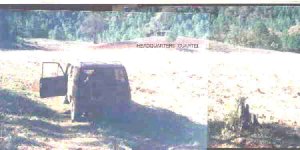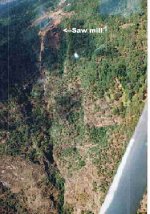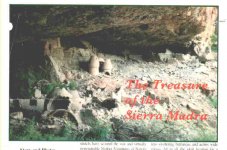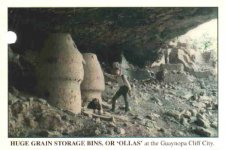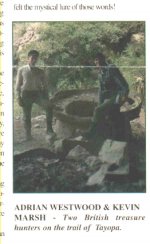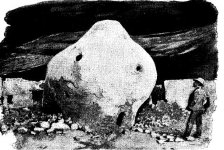My friends Don Jose and Cactusjumper,
Thanks for the good information on the Tayopa site, including the comments on the flora. Everything seems to line up.
I agree with CJ that the guerigo tree clue given by Dobie is probably long gone if it was ever valid anyway. Moreover, sounds as if there's nothing special about guerigos.
If possible, I'd like to pick another thread of previous discussion-Nino Cochise. As I remember, Cactusjumper doesn't place much credence in anything that Nino wrote in The First Hundred Years. I tend to agree, but I wonder if there's anything in the book that's true or valid. In other words, did Nino just cobble together a lot of stories he had heard and read about, or did he just exaggerate some of his own experiences. Have there been any other eyewitnesses that can corroborate his participation and actions in the accounts he has written?
I bring Nino up again, in part because he claimed to have seen Tayopa and in the hardback version of Hundred Years he provides a very general map of its location in the frontispiece. Clearly it's not Don Jose's Tayopa, but rather seems to be either Tayopa#1 or Tayopa#2 and closer to the Guaynopa country.
Also, What about the credibility of A. Kinney Griffith? Was he simply taken in by Nino, or was he part of the something more deceptive?
Thanks for the good information on the Tayopa site, including the comments on the flora. Everything seems to line up.
I agree with CJ that the guerigo tree clue given by Dobie is probably long gone if it was ever valid anyway. Moreover, sounds as if there's nothing special about guerigos.
If possible, I'd like to pick another thread of previous discussion-Nino Cochise. As I remember, Cactusjumper doesn't place much credence in anything that Nino wrote in The First Hundred Years. I tend to agree, but I wonder if there's anything in the book that's true or valid. In other words, did Nino just cobble together a lot of stories he had heard and read about, or did he just exaggerate some of his own experiences. Have there been any other eyewitnesses that can corroborate his participation and actions in the accounts he has written?
I bring Nino up again, in part because he claimed to have seen Tayopa and in the hardback version of Hundred Years he provides a very general map of its location in the frontispiece. Clearly it's not Don Jose's Tayopa, but rather seems to be either Tayopa#1 or Tayopa#2 and closer to the Guaynopa country.
Also, What about the credibility of A. Kinney Griffith? Was he simply taken in by Nino, or was he part of the something more deceptive?


